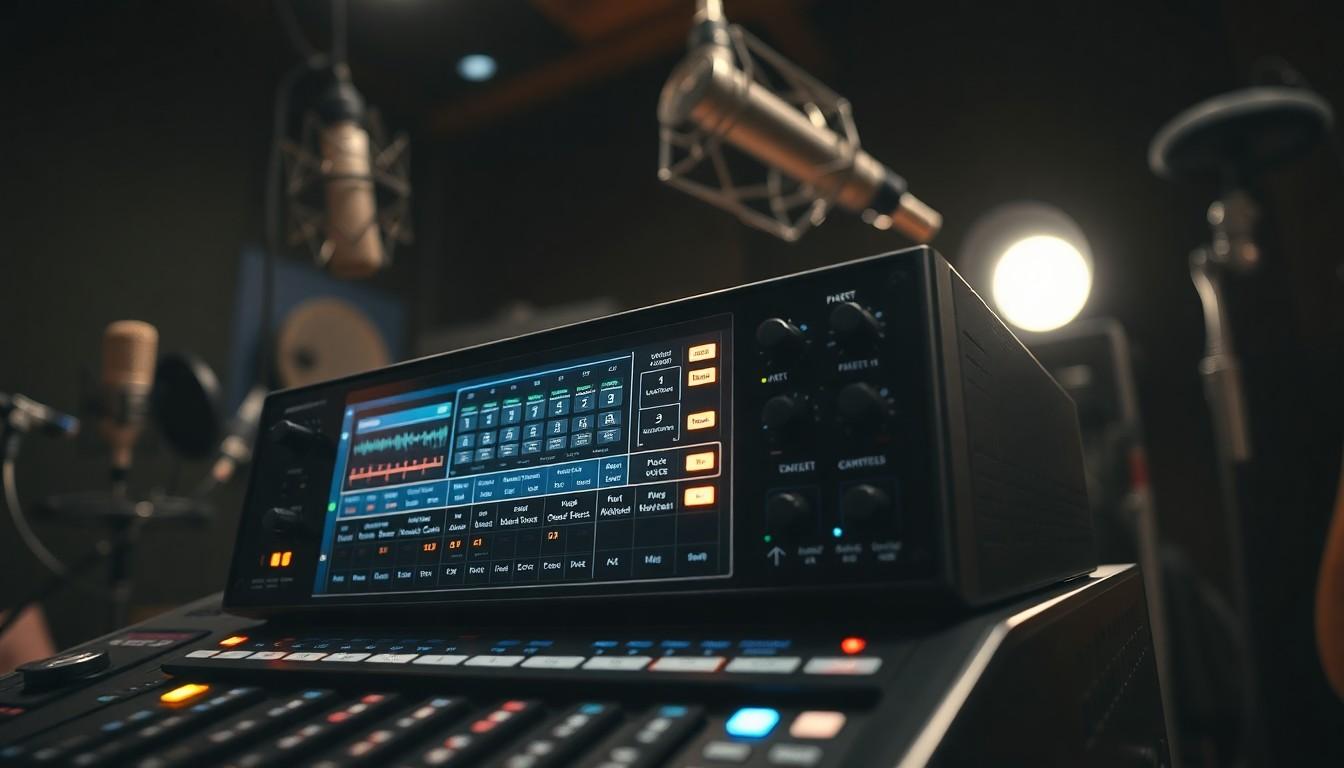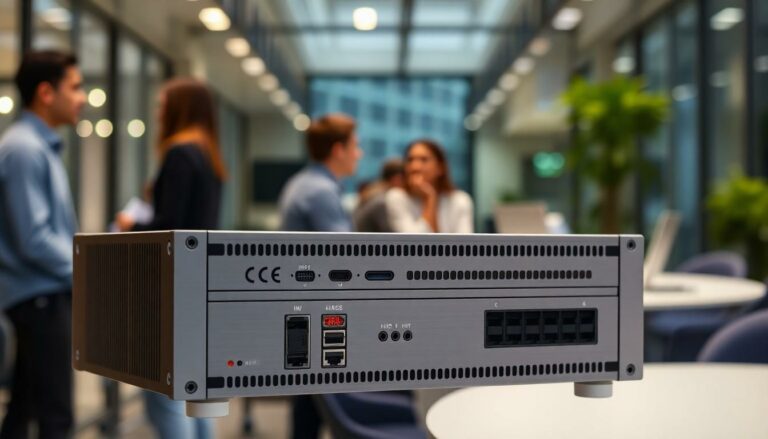Best Vocal Processor in 2024: Top 10 Studio & Live Performance Units Compared

The quest for the perfect vocal sound has never been easier with modern vocal processors transforming average singers into studio-quality performers. Whether you’re a bedroom producer crafting the next hit single or a live performer wanting to add that extra sparkle to your voice these powerful tools can make all the difference.
From pitch correction and harmonization to reverb and delay modern vocal processors pack an impressive array of features into compact units. They’re like having a professional audio engineer in a box ready to polish those vocals to perfection. The best part? You don’t need a PhD in audio engineering to make them work – most are designed with user-friendly interfaces that let you focus on what matters most: making great music.
Best Vocal Processor
A vocal processor transforms raw vocal signals into enhanced audio output through digital signal processing technology. This specialized audio device connects between a microphone and a sound system to modify vocal performances in real-time.
The processing chain in a vocal processor follows these key steps:
- Input stage captures the voice through an XLR microphone connection
- Analog-to-digital converter transforms voice signals into digital data
- Digital signal processor applies selected effects algorithms
- Digital-to-analog converter returns the processed sound to analog form
- Output stage sends the enhanced vocals to speakers or recording equipment
Modern vocal processors incorporate multiple effect types:
- Pitch correction adjusts off-key notes to the proper pitch
- Harmonization adds additional vocal layers in musical intervals
- Compression evens out volume differences between loud and soft parts
- EQ shapes the frequency response for optimal tone
- Reverb creates space simulation effects
- Delay produces echo-like repetitions
- De-essing reduces harsh sibilant sounds
| Common Processing Parameters | Typical Range |
|---|---|
| Pitch Correction Speed | 0-100ms |
| Harmony Voices | 1-8 voices |
| Reverb Time | 0.1-10 sec |
| Delay Time | 1-2000ms |
| Compression Ratio | 1:1 to 20:1 |
The processor’s interface allows users to select presets or customize parameters through physical knobs buttons or digital menus. Many units feature USB connectivity for firmware updates preset management data backup.
Types of Vocal Processors

Vocal processors come in distinct categories, each designed for specific performance enhancement purposes. These specialized tools address various aspects of vocal processing from effects layering to pitch manipulation.
Multi-Effects Processors
Multi-effects processors combine several vocal enhancement features in one unit. These comprehensive devices integrate compression, EQ, reverb, delay, modulation, filtration features into a single interface. Professional models like the TC Helicon VoiceLive 3 include over 180 effects presets with customizable parameters. Recording studios utilize rack-mounted processors such as the Eventide H9000 for intricate sound sculpting across multiple channels. Modern units feature intuitive touchscreen interfaces allowing quick effect combinations during live performances.
Pitch Correction Processors
Pitch correction processors focus exclusively on tuning vocals to precise musical notes. Auto-Tune devices correct pitch in real-time with adjustable correction speeds from subtle to dramatic effects. The Antares Auto-Tune Pro offers both automatic pitch detection plus manual graphical pitch editing. Hardware units like the Roland VT-4 provide dedicated controls for formant adjustment preserving natural vocal character. Professional studios employ the Melodyne system for transparent pitch modification across complex vocal arrangements.
Loop and Harmony Processors
Loop processors enable singers to create layered vocal arrangements through recording multiple passes. The Boss RC-505 captures up to 5 simultaneous stereo tracks with independent volume controls. Harmony processors generate additional vocal parts based on the input signal. Advanced units like the TC Helicon VoiceLive Play generate up to 4 harmony voices following musical key changes. These processors include phrase looping features for building complex vocal arrangements during live performances through footswitch controls.
Top Vocal Processors for Professional Studios
Professional studios demand vocal processors that deliver exceptional sound quality audio enhancement features. These industry-standard devices offer comprehensive control over vocal processing while maintaining pristine audio fidelity.
TC Helicon VoiceLive 3
The TC Helicon VoiceLive 3 stands as a flagship vocal processor with 180+ studio-quality effects. Its adaptive tone technology automatically adjusts EQ compression based on input signals for optimal vocal enhancement. The unit features 3 independent processors for vocals harmonies loops plus guitar effects integration. Professional users benefit from the dual XLR inputs USB connectivity real-time MIDI control. The LCD interface displays 8 customizable touch sensors for instant parameter adjustments during performances. Notable features include RoomSense microphones that detect musical key chord progressions to generate accurate harmonies.
Boss VE-500
The Boss VE-500 delivers professional vocal processing in a compact pedalboard format with studio-grade 32-bit processing. Its interface presents 9 dedicated knobs for real-time control of essential parameters. The processor includes 50 factory presets 99 user memory slots for storing custom settings. Advanced features encompass auto pitch correction variable harmonizer effects plus comprehensive dynamics processing. The unit provides stereo XLR outputs balanced TRS connections MIDI integration options. Users access deep editing capabilities through the free VE-500 Editor software allowing precise control over every processing parameter.
Best Vocal Processors for Live Performance
Live vocal processing demands equipment that delivers reliable performance with minimal latency. These processors combine durability with intuitive controls for real-time vocal manipulation during performances.
Roland VT-4
The Roland VT-4 transforms live vocals with 4 assignable effect slots accessible via dedicated faders. Its compact design includes essential vocal effects like reverb, delay, pitch correction, and harmonization. The processor features MIDI compatibility for DAW integration plus an auto-pitch function that provides natural-sounding pitch correction in real-time. Users control effects through illuminated buttons that display active settings at a glance. The VT-4 operates via USB power or batteries, making it ideal for mobile performers. Its robust metal chassis withstands the rigors of live performance while maintaining pristine 24-bit audio quality.
TC Helicon Perform-VE
The TC Helicon Perform-VE delivers professional vocal effects in a floor-based format with hands-free control. Its adaptive tone technology automatically adjusts EQ, compression, and de-essing based on input signals. The processor includes 8 effect combinations accessible through footswitches, featuring reverb, delay, double tracking, and harmony generation. Built-in anti-feedback protection prevents unwanted sound artifacts during live performances. The unit’s balanced XLR connections ensure clean signal paths while its dedicated mic gain control optimizes input levels. TC Helicon’s HIT footswitch enables instant access to multiple effects simultaneously for dynamic performance moments.
Budget-Friendly Vocal Processor Options
The Behringer Virtualizer 3D FX2000 delivers professional vocal effects at $129, featuring 71 effect algorithms including reverb, delay, pitch correction and compression. Musicians access multiple effects simultaneously through dual-engine processing architecture with 24-bit converters.
The TC Helicon GO XLR Mini offers studio-quality processing at $249, integrating seamlessly with streaming setups through USB connectivity. Content creators control vocal effects, audio routing and mixer functions through an intuitive interface.
Here are three affordable vocal processors under $200:
- BOSS VE-2 ($179): Contains 12 vocal effects presets with real-time pitch correction
- TC Helicon VoiceTone C1 ($149): Features hardwire bypass circuitry for transparent sound
- Zoom V3 ($169): Includes 16 vocal effects with 3 memory slots for custom presets
Key specifications for budget processors:
| Model | Effects | I/O | Price |
|---|---|---|---|
| FX2000 | 71 effects | XLR/TRS | $129 |
| GO XLR Mini | 6 effects | USB/XLR | $249 |
| VE-2 | 12 presets | XLR/1/4″ | $179 |
Entry-level vocal processors maintain essential features while optimizing cost:
- Built-in chromatic tuner functionality
- Basic harmonization capabilities
- Reverb delay combinations
- Single XLR input output connectivity
- LED display for parameter adjustment
- Battery or AC adapter power options
The Behringer MIC2200 provides transparent microphone preamplification at $99, featuring two channels with phantom power, parametric EQ controls for precise tonal shaping.
Key Features to Consider When Choosing a Vocal Processor
Selecting the right vocal processor requires careful evaluation of several essential features. Understanding these key elements ensures optimal performance for specific vocal processing needs.
Sound Quality and Effects
Premium vocal processors deliver 24-bit or 32-bit audio processing with sampling rates up to 192 kHz. Professional-grade units include studio effects like compression, EQ, de-essing, pitch correction, harmonization, reverb, delay, chorus, flanger. The TC Helicon VoiceLive 3 offers 180+ studio-quality effects with adaptive tone technology, while the Boss VE-500 features 32-bit processing with transparent audio quality. Audio clarity remains consistent across frequency ranges from 20 Hz to 20 kHz. Effect parameters provide precise control over characteristics like reverb decay time (0.1 to 10 seconds), delay feedback (0-100%), pitch correction speed (0-500ms).
Ease of Use
Modern vocal processors incorporate intuitive interfaces with LCD screens, rotary encoders, footswitches for hands-free operation. Preset systems store multiple effect combinations, enabling instant recall during performances. The Roland VT-4 features four assignable effect slots with dedicated control knobs for real-time adjustments. Touch-sensitive interfaces display parameter values, effect chains, preset information. Auto-detection technology recognizes input signals, adjusting gain levels automatically. Quick-access buttons activate commonly used effects without menu navigation.
Connectivity Options
Professional vocal processors include balanced XLR inputs outputs for microphone connections studio integration. Digital interfaces support USB MIDI connectivity for DAW integration software control. The TC Helicon Perform-VE offers dual XLR inputs, stereo line outputs, USB port for firmware updates preset management. Additional connections include auxiliary inputs for backing tracks, headphone outputs for monitoring, footswitch inputs for external control. MIDI implementation allows synchronization with external equipment, enabling tempo-based effects control via external controllers sequencers. Input output options accommodate various impedance levels (50Ω-600Ω) signal types.
Vocal processors have revolutionized both studio recording and live performances by providing musicians with powerful tools for vocal enhancement. From premium units like the TC Helicon VoiceLive 3 to budget-friendly options such as the Behringer Virtualizer 3D FX2000 there’s a solution for every need and budget.
The right vocal processor can transform an average performance into a professional-sounding production through features like pitch correction harmonization and effects processing. Whether it’s for studio work live shows or streaming choosing the appropriate processor depends on specific requirements sound quality needs and available budget. Today’s market offers an impressive range of options that make studio-quality vocal processing accessible to all musicians.





